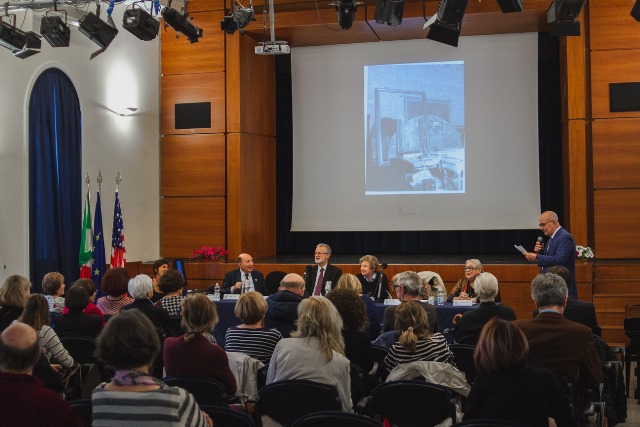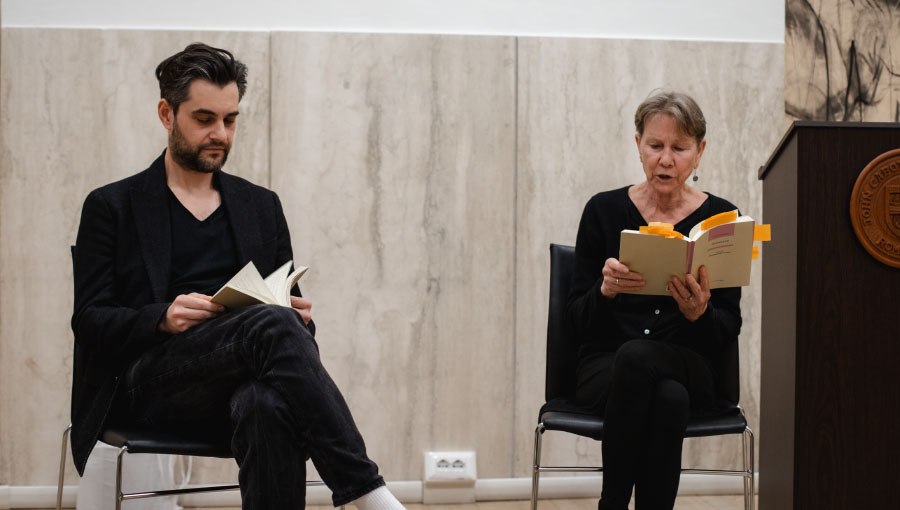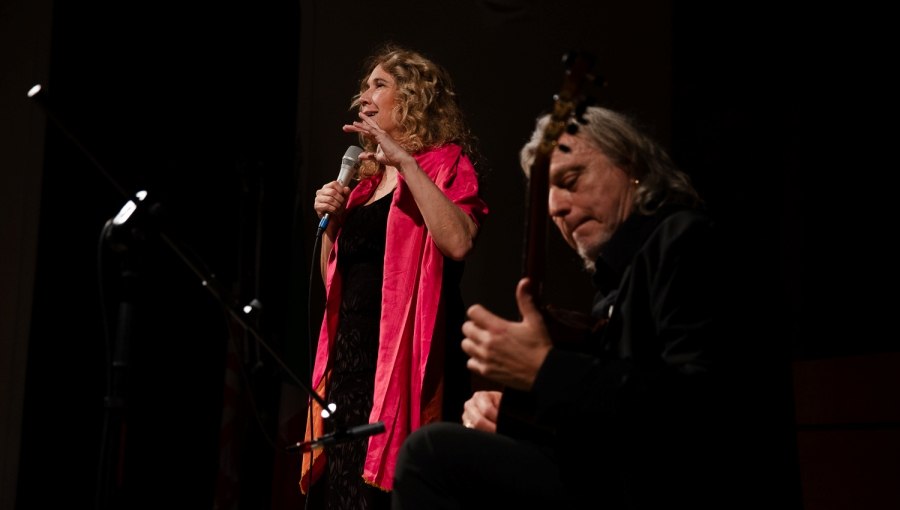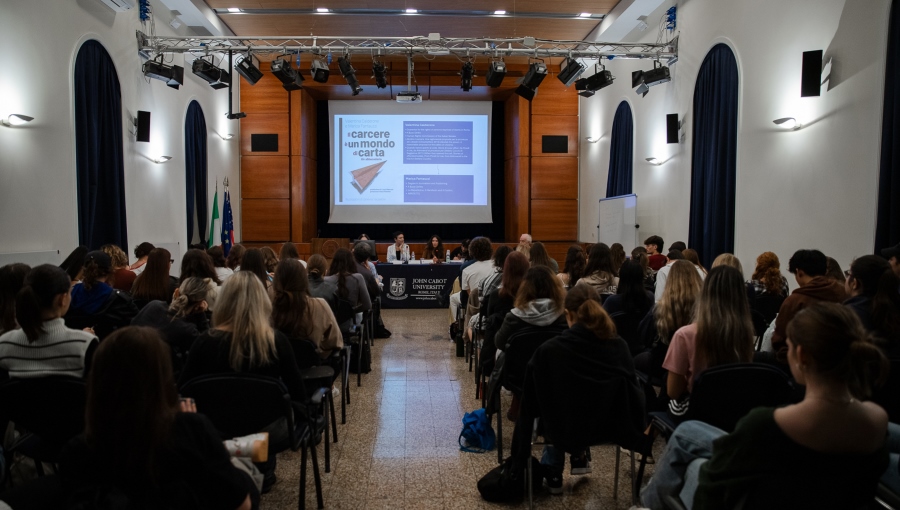Vivere è scrivere: JCU Presents Visual Biography of Giorgio Bassani
On May 28, 2019, John Cabot University had the honor of presenting Vivere è scrivere. Una biografia visive di Giorgio Bassani (Living is Writing. A Visual Biography of Giorgio Bassani), recently published by Edisai edizioni in Ferrara, Italy.
The bilingual (Italian-English) volume edited by Dr. Portia Prebys and Gianni Venturi, follows the life of the Italian novelist, poet, essayist, and editor, who is best known for his internationally acclaimed novel The Garden of the Finzi Contini. The 384-page book contains hundreds of images and documents, some previously unpublished, and explores Bassani’s life from his youth in his beloved native city of Ferrara, where he grew up in a Jewish family, to the years of Mussolini’s racial laws, and finally the postwar and Roman periods.
Sponsored by the Department of Modern Languages and Literature and the Office of the President, the event featured the two editors, publisher Alessandra Saini, and some of the contributing authors: Anna Dolfi, Dora Liscia, and Daniele Ravenna. JCU Italian Literature professor Federica Capoferri acted as moderator.

From left: Professor Federica Capoferri, Gianni Venturi, Daniele Ravenna, Anna Dolfi, Dr. Portia Prebys, JCU President Franco Pavoncello
A long time JCU Trustee as well as President of the Association of American Colleges and University Programs in Italy (AACUPI), Dr. Prebys was Giorgio Bassani’s companion from 1977 until his death in 2000. In 2014, she donated the author’s bequest to the city of Ferrara. The generous gift, which included 4,000 books, thousands of pages of bio-bibliographical information, personal memorabilia, and numerous works of art, led to the creation of the city’s Center for Bassani Studies, of which Dr. Prebys is curator.
“In 2016,” explained Prebys, “Gianni Venturi and I had the idea for this book. It was a labor of love as well as a work of historiography.”
According to Venturi, since Bassani actually wanted to study art history, writing was a type of compromise for him. “The covers of his books, with artwork by important artists such as Filippo De Pisis, Nicolas de Staël, Francis Bacon, and Giorgio Morandi, are, in fact, an integral part of his novels. Looking at the images is a way of adding to and explaining the story,” said Venturi.
In 1943, after spending three months in prison for antifascist activities, Bassani left for a brief stay in Florence and then went to Rome, the city where he spent the rest of his life. During the postwar years when railroads were being rebuilt, he would often bicycle from Rome to Ferrara and back, a distance of 335 kilometers (about 208 miles). “He always said that he needed distance in order to write about his city,” said Dr. Prebys.
The cover of Vivere è scrivere features a portrait of the author painted by Carlo Levi in 1953, while the book begins and ends with a historic map of Ferrara, the city that plays such a crucial role in Bassani’s narrative, as does the experience of the city’s Jewish community.





